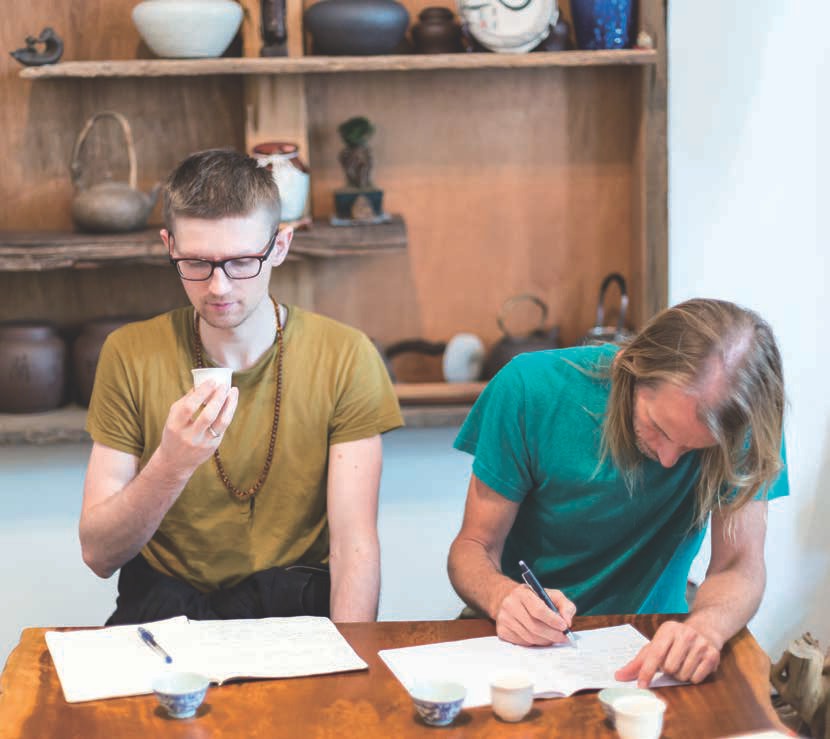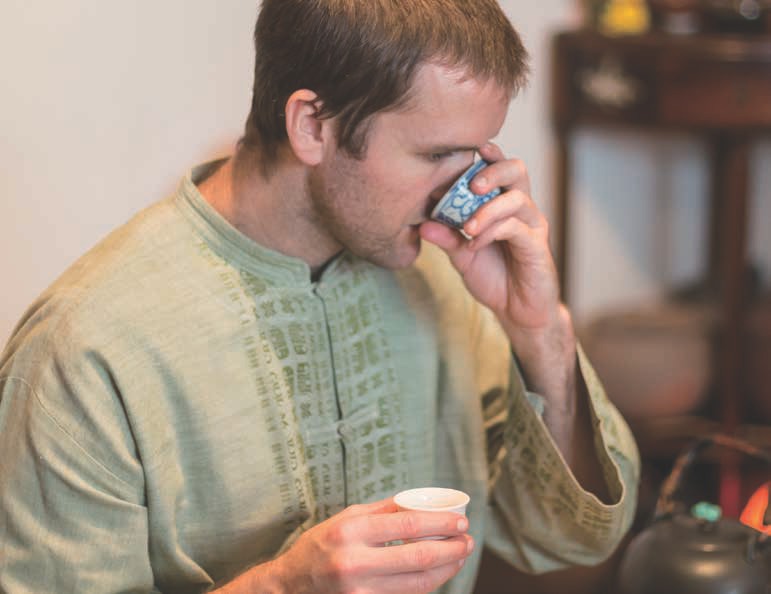
 |
|

Edward Brown, a Zen priest and former tenzo (monastery cook) at the Tassajara Zen Mountain Center, once said, "In the course of life we get banged up. We don't treat each other respectfully and kindly. Somehow the thing that captured my attention, of all things in the kitchen, was the teapots. There is some quality to them that continues even though they are banged up and tarnished. They still seem so willing to carry tea and water; and to serve the people who were using them. And so I would look at those teapots and I would think, 'If you can do it, I can do it, too.' We can be inspired by teapots!" There is something beautiful in an antique. While they are never perfect, it is through their imperfection that beauty shines. The small chips, the deep tea stains, the soft glow - these all make up a small part of the magic in an old piece of teaware. They can transport you to another time, when people were their profession. When their father and their father's father all had the same vocation. If you close your eyes when you hold an antique cup, you can imagine all the other people who have held it over the centuries: those who have cared for it, used it and passed it on. And if you do the same, you'll be holding something that will outlive you, and perhaps in some small way convey your tea spirit to those left sharing tea after you have gone...

While such poetry is nice, the experiment section of Global Tea Hut asks us to focus on a less subjective approach. I still feel licensed to nostalgia before experimenting with an antique cup, though. After all, the tea table is not a laboratory. We don't don white coats before conducting these experiments, as complete objectivity is never the aim. (Let alone engaging in a philosophical discussion about whether complete objectivity is even possible.) But in an attempt to move from the subjective to the objective, we do focus on mouthfeel for the purpose of these gongfu experiments. In our experience, and the experience of our teachers before us, this gives a much greater degree of concordance. And that means we have a much sturdier diving board from which we can leap into a dialogue on quality. It also means we have a more accurate means to gauge our progress.
This month we compared a Qing Dynasty cup to a new Taiwanese porcelain one. You can use this methodology for comparing any of your cups at home, so do not feel you cannot participate in this month's experiment because you do not have a Qing cup. Alternatively, you could test the shape, size, glazing or any other aspect of two different cups. In fact, comparing different cups is one of the most important of all experiments. All too often, we find that tea practitioners gravitate towards the cups that they find to be aesthetically pleasing, as opposed to those that make the best tea. But as Master Lin always says, "Over time, you realize more and more that the cups that make the best tea are always the most beautiful ones as well, for they possess inner beauty." Learning to love the teaware that elicits the greatest potential from our tea is a huge aspect of gongfu tea.
You will need two cups you wish to compare. In our case we used a Qing Dynasty cup and compared it to a modern tulip-shaped porcelain one, made here in Taiwan. It is important to note that shape can be as important a factor in the quality of the tea liquor as the caliber of the material. You will also need a brewing vessel. We used an Yixing purple-sand (zisha) pot. Normally we use a less-oxidized oolong for these experiments - brewed lightly, which helps us focus on the differences between the two variables, as we are less likely to get distracted by flavors or aromas. However, this time we used last month's Old Man Dong Ding, as we have been enjoying it so much we couldn't resist!

Place both the cups side by side, as if you were brewing normally. Rinse the cups, the pot and then the leaves. Warm both cups and then lightly brew the tea, pouring evenly back and forth between the two cups. Take one cup in each hand, starting with the new porcelain one, and move back and forth between the two. Do this in silence, even if you are doing the experiment with another person. Have a notepad on hand to write down any differences you notice. You can also consider temperature - not just the degree but the quality of the heat. Is it scalding or penetrating? You can also notice aroma - not the specific fragrances, but how high it rises, and whether it fills the nasal cavity or not. As always, focus on the mouthfeel. Is the tea smooth or rough? Does it go back on its own or do you have to swallow it forcefully? Does it pinch the throat? Is it coating? By focusing on these aspects, you should be able to determine which cup improves the tea liquor. Try asking the tea which cup it wants to be in. This may sound silly at first, but even asking it quietly in your mind opens up new doorways of experience and sensitivity.

You should repeat this process at least three times, making notes and noticing the changes from cup to cup, steeping to steeping. We would love to hear about your results comparing cups. We have an amazing discussion board on our website, and you will find that one of us is always standing by to reply to your questions or comments. Share your insights with the community and us, and help make this Global Tea Hut extend beyond these pages!